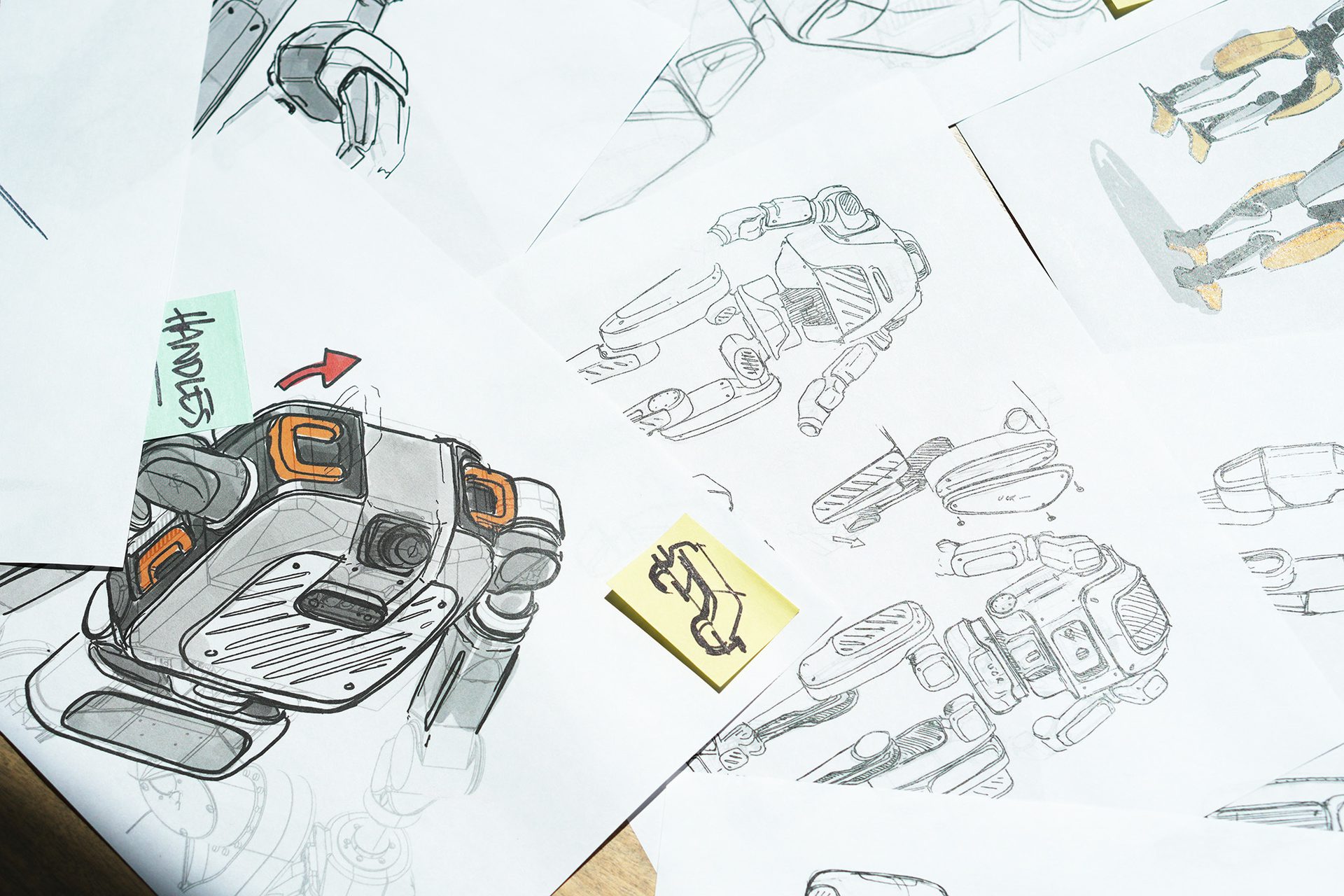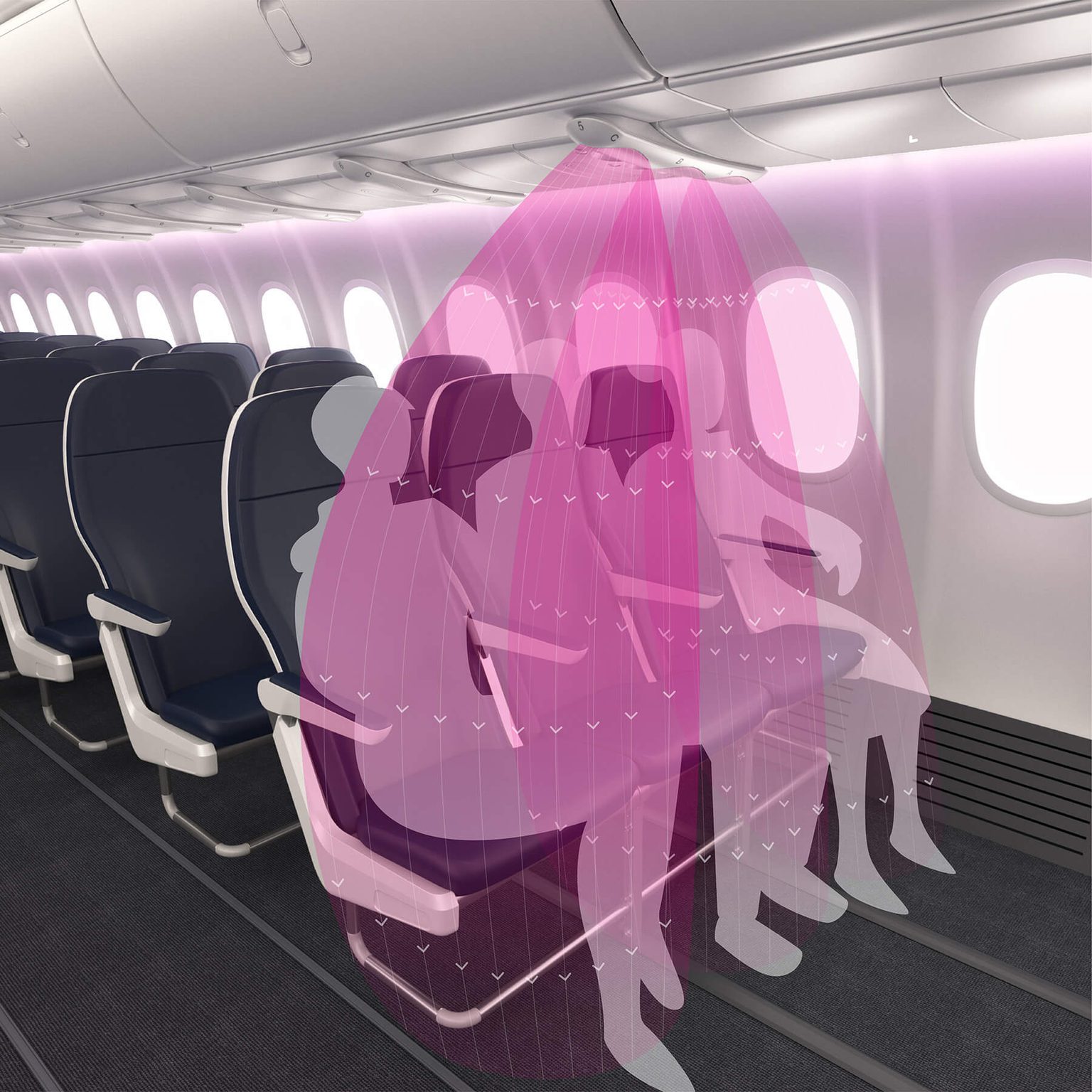
Technology

As airlines battle to solve the impossible ask of re-creating 'safe' social distancing requirements in crowded cabins, it could be that the industry is looking to develop a solution to the wrong problem. Rather than distance, it's airflow that plays the most significant role in the spread of Covid-19 in an airplane. Based on our ongoing research, a solution to this problem could be surprisingly simple.
Based on our existing knowledge, there are two transmission processes for the virus, either as an airborne particulate or from viral particles that have settled on surfaces. Currently, airlines are only able to fully control cleanliness and the sanitization of a cabin before the boarding process. While airlines have quickly become very effective at that, as soon as passengers interact with the environment, that ability to control the sanitization diminishes rapidly.
IATA has now recommended that all passengers should wear masks – a decision already adopted by most airlines currently flying – easing one of the most significant concerns to passengers, airborne contamination. Unlike physical surfaces, the flow of air is the one thing a passenger can't truly control, so it breeds anxiety for many who don't know if they are sitting in the proximity of someone who is contagious.
Airplanes are still one of the safer transport options; HEPA air filters ensure that the quality and sanitation levels of recycled air is still very high. However, the path of immediately exhaled water vapor droplets in the aircraft cabin environment wields the potential for virus spread.
The flow of air is the one thing a passenger can't truly control, so it breeds anxiety for many travelers.
Research has already been done on the airborne transmission of Covid-19. In the tracking of an aggressive spread in a Guangzhou restaurant from one person to many others, the most influential factor was not actually distance as airflow within the property carried the virus over 10-feet; this was due to the air conditioning system which propelled the contaminated air around the room, amplifying the range of the contagion.
Aircraft are different. In contrast to a poorly ventilated restaurant, the airflow in the cabin can actually help to limit the distance of an infectious water vapor droplet. While the cabin airflow helps reduce the risk of large scale virus spread on board, it does little to protect those sitting within a few seats of a sick passenger.
We have already seen commendable and thought-provoking concepts by the design and engineering community attempting to solve social distancing with new cabin products, but is it possible to quantify their success? The only true metric is perception, and while innovations that look like they are solving the problem will undoubtedly create 'peace of mind' and get passengers back on seats but there's no evidence to suggest that they will actually solve the issue.
By creating our own computational fluid dynamics model (CFD), we were able to simulate the airflow in the cabin and trace the water vapor droplets from an unguarded sneeze. While it is admittedly unlikely that someone would behave in such a way, especially now, it's essential to plan for a worst-case scenario.
AirShield is an invisible germ isolation unit around each passenger and a commercially viable solution to social distancing for air travel.
The cabin simulations show us that, in the absence of additional airflow, the likely spread of water vapor droplets to adjacent passengers; however, the simplest of solutions might be right in front of us. By utilizing the space currently used by air gaspers, we created AirShield – an invisible germ isolation unit around each passenger by engineering 'blades' of air.

Similar to the warm air curtain you will have experienced when walking through a doorway of any retail outlet during winter months, this laminar profile of airflow creates a barrier around each seat that disrupts the normal circulation of air. When a passenger breathes, coughs, or even sneezes, the water vapor is contained within that passenger space and is immediately redirected downwards and out of the cabin to the HEPA filtration units before it has the opportunity to enter the personal space of a neighboring passenger.
Download AirShield White Paper
Complicated testing of new products often becomes a roadblock in the airline industry, with long lead-times and weighty costs to implement a solution. In the case of Covid-19 and the globe's continually evolving approach to responding to the virus, adaptability and speed of roll-out is paramount; this is why many of the solutions currently being developed have to have post-Covid value too.
The AirShield is a single 3D printed component that fits directly on to the PSU rail over the top of existing gaspers. The simplicity of the design means that with just one grill per seat row, the 60 grills required to fit a narrow-body aircraft could be fitted overnight as a service bulletin, something other solutions so far haven't been able to address.
The AirShield is a single 3D printed component that fits directly on to the PSU rail over the top of existing gaspers.
While the product itself is in early-stage prototyping and engineering development, its simplicity is geared for rapid deployment to help restore confidence in air travel during a time of increasing uncertainty.
Having such a global impact, the socio-economic effect of Covid-19 will have long-lasting subconscious consequences, altering our sanitation awareness levels permanently. Should the product prove popular and measurable in its effectiveness, we could see this principle being integrated into the PSU rail design of future clean aircraft too.

While we aim to solve the issue in a densely populated aircraft cabin, the learnings can be applied to mobility and built environments outside of the airline industry as well. As there are many different approaches across the globe to creating and maintaining healthy distances between people, proximity will always create some form of social tension, and easing this will become a measure of success.
There is the possibility to 'blade' a variety of social spaces, from gyms and workspaces to retail and restaurants. Airflow is a key player of Covid-19 and future pandemics, yet it's a part of the conversation that is still being overlooked. We see the future of air-conditioning and circulation having a role to play in creating sanitary and safe environments across the globe, and here at Teague, it's something we are proudly exploring.